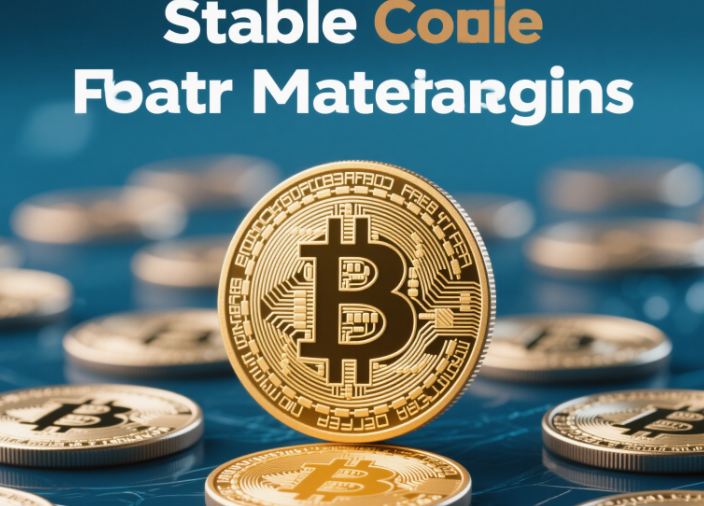In the volatile world of cryptocurrencies, stablecoins have emerged as the unsung heroes, providing stability, liquidity, and a bridge between traditional finance and the decentralized economy. As the cryptocurrency market continues to evolve, stablecoins are not just a niche product—they’re reshaping the global financial landscape. This article explores the mechanics, types, and future of stablecoins, highlighting their pivotal role in driving crypto adoption and addressing the challenges they face.
What Are Stablecoins?
Stablecoins are cryptocurrencies designed to maintain a stable value, typically pegged to fiat currencies like the US dollar, commodities like gold, or even algorithms. Unlike Bitcoin or Ethereum, which can fluctuate wildly in price, stablecoins offer predictability, making them ideal for everyday transactions, cross-border payments, and risk-averse investments.
The first stablecoin, Tether (USDT), was launched in 2014, pegged 1:1 to the US dollar. Since then, the market has exploded, with over $180 billion in total market capitalization as of 2025 . Stablecoins now account for over 5% of the entire crypto market and are used in 80% of decentralized finance (DeFi) transactions .
Types of Stablecoins
1. Fiat-Collateralized Stablecoins
These stablecoins are backed by reserves of fiat currency (e.g., US dollars) held in bank accounts. Examples include USDT (Tether), USDC (USD Coin), and BUSD (Binance USD). While they offer stability, concerns about transparency and reserve audits persist. For instance, Tether faced criticism for years over its opaque reserve holdings, though it now publishes monthly reports .
2. Crypto-Collateralized Stablecoins
Backed by other cryptocurrencies (e.g., Ethereum, Bitcoin), these stablecoins require over-collateralization to mitigate volatility. The most famous example is DAI, managed by MakerDAO. If the value of the collateral drops, users must add more crypto to maintain the peg. This ensures stability but limits scalability due to high collateral requirements .
3. Algorithmic Stablecoins
These use smart contracts and algorithms to adjust supply dynamically. TerraUSD (UST) was once a major player but collapsed in 2022 due to flawed mechanisms. However, projects like Djed (Cardano) and Ethena USDE are reviving the model with improved safeguards, such as delta hedging and multi-collateral strategies .
4. Commodity-Backed Stablecoins
Pegged to physical assets like gold (e.g., PAX Gold) or real estate, these stablecoins combine stability with exposure to tangible assets. They’re popular among investors seeking diversification .
Why Stablecoins Matter
1. Stability in Volatile Markets
Stablecoins act as a safe haven during crypto market downturns. Traders often convert their holdings to USDT or USDC to avoid losses, then reinvest when prices stabilize .
2. Efficient Cross-Border Payments
Traditional remittances can take days and cost up to 7% in fees. Stablecoins enable near-instant, low-cost transfers. For example, Ripple’s RL USD is designed for cross-border settlement, while Visa plans to integrate stablecoins into its payment network by 2025 .
3. DeFi’s Lifeblood
Stablecoins are the backbone of decentralized finance, powering lending, borrowing, and yield farming. Over $120 billion in stablecoins are locked in DeFi protocols like Aave and Uniswap, facilitating liquidity and earning users passive income .
4. Financial Inclusion
In regions with unstable currencies, stablecoins provide access to global markets. For instance, USDT is widely used in Argentina and Turkey to hedge against hyperinflation .

Market Leaders and Innovations
- Tether (USDT): With a market cap of $125 billion, USDT dominates the stablecoin space, though regulatory scrutiny persists .
- USDC: Backed by Circle and Coinbase, USDC is known for transparency and regulatory compliance. It’s the preferred stablecoin for DeFi, with $34 billion in circulation .
- Ethena USDE: A synthetic stablecoin using Ethereum as collateral, USDE surged in 2024, becoming the third-largest stablecoin by market share .
- PayPal USD (PYUSD): Launched in 2023, PYUSD leverages PayPal’s network to bridge traditional and crypto payments .
Challenges and Risks
1. Regulatory Uncertainty
Governments worldwide are grappling with how to regulate stablecoins. The EU’s MiCA framework requires issuers to hold 100% reserves and comply with strict anti-money laundering (AML) rules . In the US, the Clarity for Payment Stablecoins Act aims to provide a legal framework, but debates continue over federal vs. state jurisdiction .
2. Liquidity and Trust Issues
Fiat-collateralized stablecoins rely on reserves, which can be mismanaged. For example, Tether’s reserves once included risky assets like commercial paper, raising concerns about its ability to maintain the peg .
3. Security Risks
Smart contract vulnerabilities and hacks pose risks. In 2023, the Mango Markets exploit cost users $116 million, highlighting the need for robust security audits .
4. Competition from CBDCs
Central bank digital currencies (CBDCs) like China’s digital yuan could compete with private stablecoins. However, stablecoins offer faster innovation and broader accessibility .
The Future of Stablecoins
1. Regulatory Compliance
Expect stricter rules on reserves, transparency, and AML. Projects like FD USD (Hong Kong) and US DG (Singapore) are leading the way with compliant frameworks .
2. Technological Advancements
- Layer 2 (L2) Scaling: Platforms like Arbitrum and Optimism are reducing transaction fees and improving speed for stablecoin transactions .
- AI and Automation: AI-driven tools will optimize risk management and yield farming, enhancing user experience .
3. Institutional Adoption
Corporations and banks are embracing stablecoins for payroll, supply chain payments, and treasury management. Visa’s stablecoin card program and Circle’s partnerships with Mastercard signal a shift toward mainstream integration .
4. Cross-Border Dominance
Stablecoins will disrupt traditional remittances, with projects like Ripple’s RL USD and Terra’s Celo targeting emerging markets .
Conclusion: The Stablecoin Imperative
Stablecoins are no longer a speculative asset—they’re a foundational pillar of the digital economy. From enabling DeFi innovation to revolutionizing cross-border payments, their role is indispensable. As regulations clarify and technology advances, stablecoins will bridge the gap between crypto and traditional finance, driving mass adoption.
Stay informed with Bitora for real-time stablecoin market insights, regulatory updates, and expert analysis. Visit Bitora to navigate the future of digital finance.









Leave A Reply